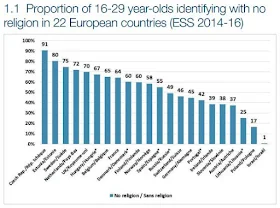 |
| Neanderthal skeleton and artist's reconstruction. |
Having said that, however, there is a very good reason why there are no transitional forms between some earlier species and later ones - the later ones did not evolve from the earlier one as a superficial reading of the geological column might suggest. I explained this some years ago using the apparent 'transition' from red squirrels to greys in Britain, but there is an even better European example from our own ancestry.
Neanderthals were first discovered in 1829 in Belgium but it was not until 1864 that, following other discoveries, they were identified as an archaic species of humans and a different species to Homo sapiens, H. neanderthalensis. This was just a few years after Darwin's Origin of Species and before any of the many African hominin fossils had been found.


